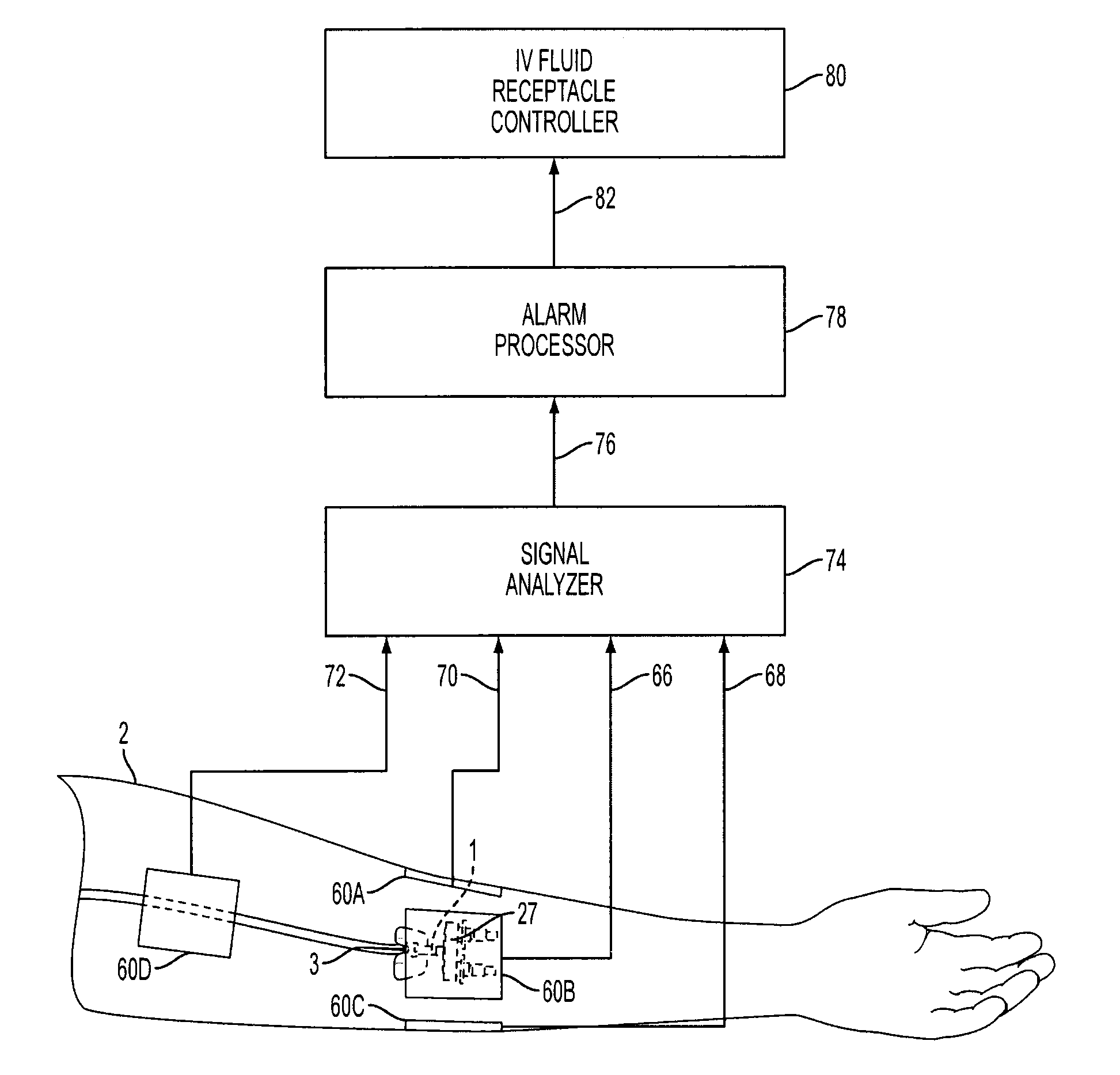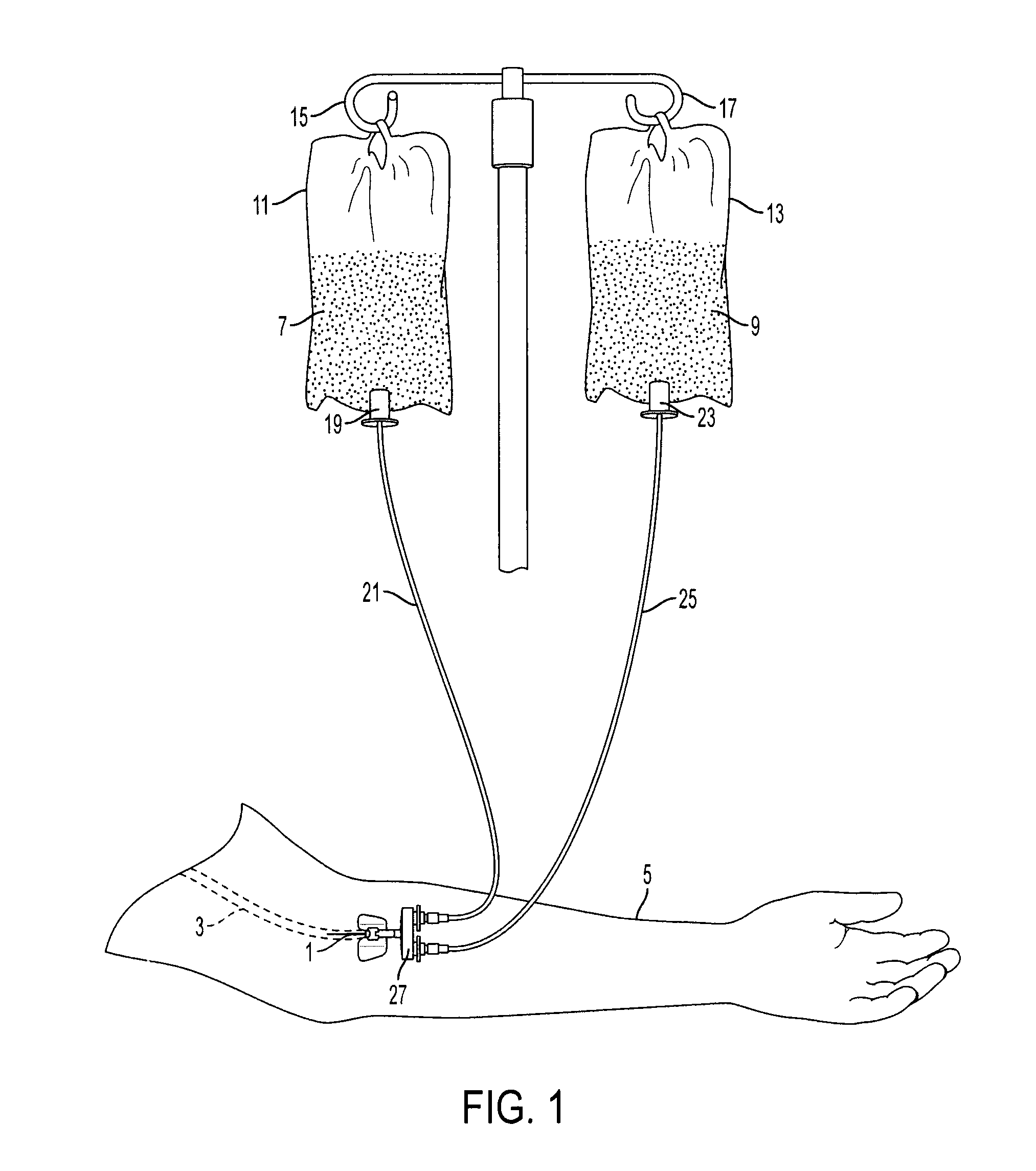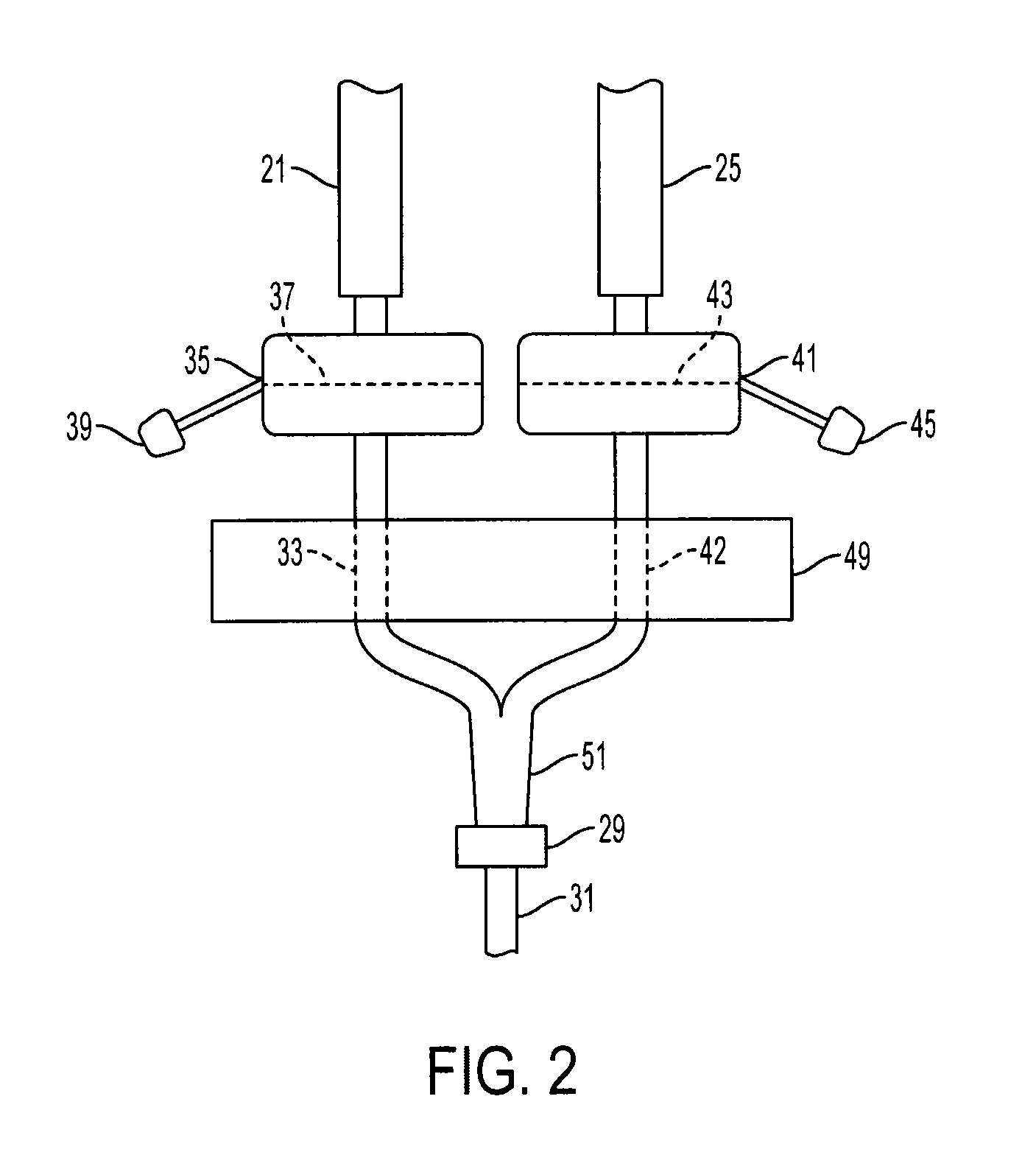Intravenous infiltration detection
- Summary
- Abstract
- Description
- Claims
- Application Information
AI Technical Summary
Benefits of technology
Problems solved by technology
Method used
Image
Examples
Embodiment Construction
[0032]The present invention provides a method and means for allowing medical personnel to detect the occurrence of an infiltration or extravasation during intravenous (IV) infusion in a clinical setting. IV infusion is a standard and often preferred method for administering therapeutic agents and nutrients directly into the blood stream of a patient. Herein, the term “therapeutic agent” is inclusive of all medicinal and nutritional substances which are administered via IV infusion in a continuous manner to a patient, as opposed to substances which are administered in a single injectable bolus. Of course, the IV infusion need not contain a therapeutic agent. The IV administerable therapeutic agent, for example, is inclusive of continuously administered anesthetics, continuously administered diagnostic agents such as contrast agents, continuously administered antibiotics and other drugs, continuously administered vitamins and other nutrients which at times are considered drugs, and th...
PUM
 Login to View More
Login to View More Abstract
Description
Claims
Application Information
 Login to View More
Login to View More - R&D
- Intellectual Property
- Life Sciences
- Materials
- Tech Scout
- Unparalleled Data Quality
- Higher Quality Content
- 60% Fewer Hallucinations
Browse by: Latest US Patents, China's latest patents, Technical Efficacy Thesaurus, Application Domain, Technology Topic, Popular Technical Reports.
© 2025 PatSnap. All rights reserved.Legal|Privacy policy|Modern Slavery Act Transparency Statement|Sitemap|About US| Contact US: help@patsnap.com



